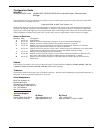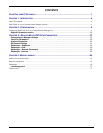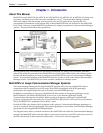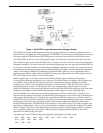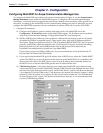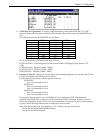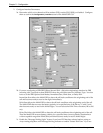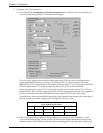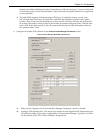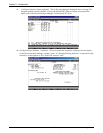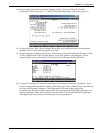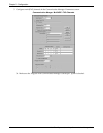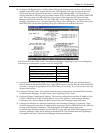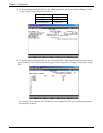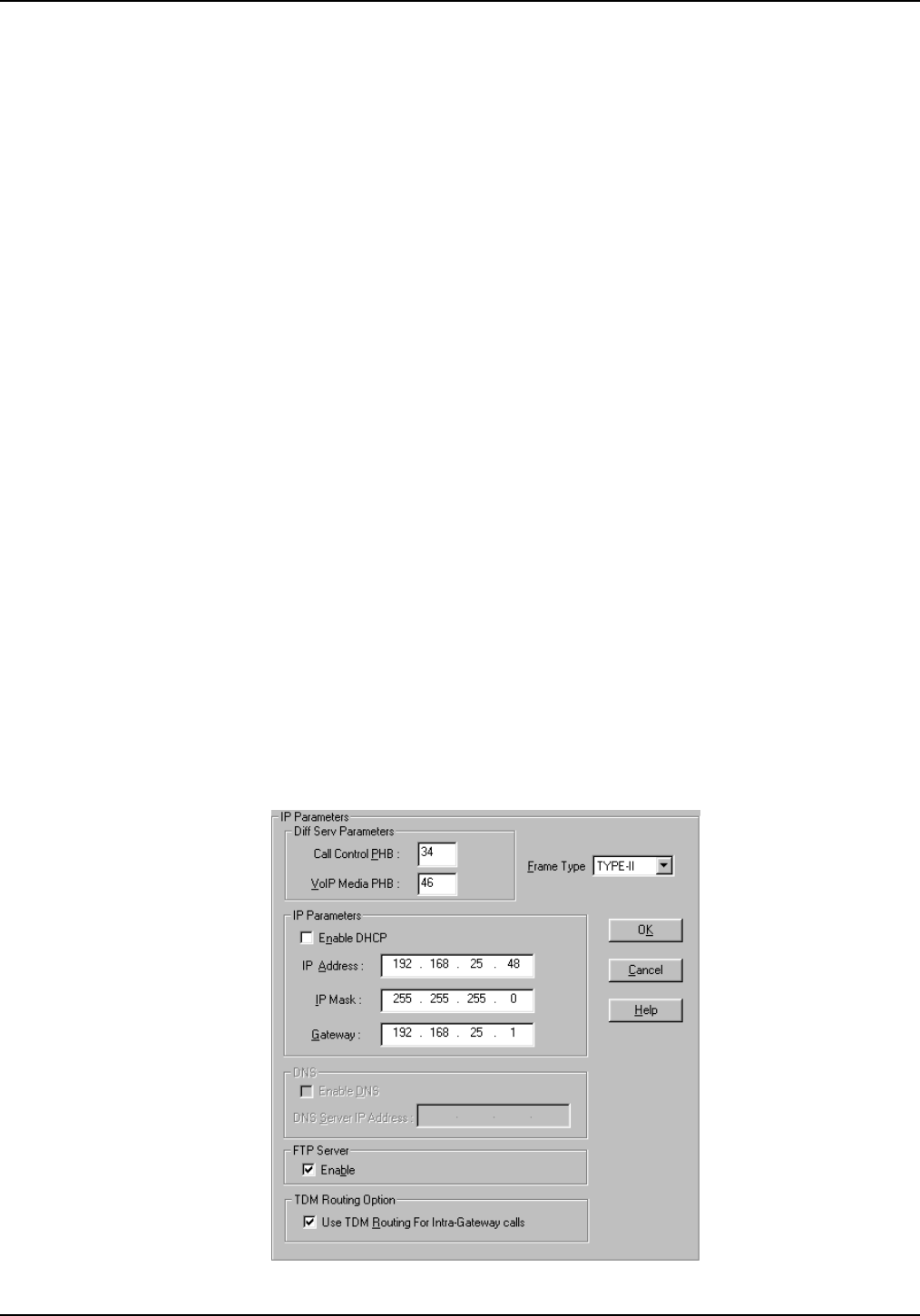
Chapter 2 – Configuration
6 Multi-Tech Systems, Inc. Avaya Communication Manager Guide
Chapter 2 - Configuration
Configuring MultiVOIP for Avaya Communication Manager Use
To configure the MultiVOIP unit within such a system (similar to that in Figure 1), use the Communication
Manager Parameters
screen within the MultiVOIP program. If “Register with Communication Manager
Gatekeeper” is selected, then many parameters must assume default values and those will be grayed out on
the screen. In setting up the MultiVOIP unit for Communication Manager use, bear in mind that you may
configure the MultiVOIP to operate with any combination of stations (FXS) and/or trunks (FXO/DID).
1. Configure IP Parameters
1a. Configure the IP address, gateway address, and mask used by the MultiVOIP unit in the
Configuration |IP Parameters screen of the MultiVOIP program. The IP address must match that
used in the Communication Manager “Change Node Names IP” form (dialog box).
1b. DiffServ PHB (Per Hop Behavior) values pertain to a differential prioritizing system for IP packets
as handled by DiffServ-compatible routers. There are 64 values, each with an elaborate technical
description.
These descriptions are found in TCP/IP standards RFC2474, RFC2597, and, for present
purposes, in RFC3246, which describes the value 34 (34 decimal; 22 hex) for Assured Forwarding
behavior (default for Call Control PHB) and the value 46 (46 decimal; 2E hexadecimal) for
Expedited Forwarding behavior (default for Voip Media PHB).
If you wish to use just one DiffServ PHB value, Ayaya recommends the value 46 (46 decimal; 2E
hex) for both Call Control and VOIP Media.
1c. If you require that the MultiVOIP get its IP address from a DHCP server, select the “Enable DHCP”
option. The DHCP server must be located at the same site as the MultiVOIP so it is available in the
event of wan link failure. The DHCP server must issue an IP address that is statically defined on
the DHCP server so that the MultiVOIP gets the same IP address all the time.
1d. TDM Routing Option. Calls placed between ports on the same MultiVOIP voice channel board
will normally be routed over the MultiVOIP’s internal TDM (Time Division Multiplexed) bus. TDM
calls have less delay than calls routed over IP. On MVP410/810-AV models, calls between channels
1-4 or channels 5-8 will be TDM routed. Calls between voice boards (for example, channel 1 calling
channel 5) will be IP routed. If you require all calls to be IP routed, disable the “use TDM Routing
for Intra-Gateway Calls” option. This should not normally be required, so it is recommended that
you leave TDM Routing enabled.




